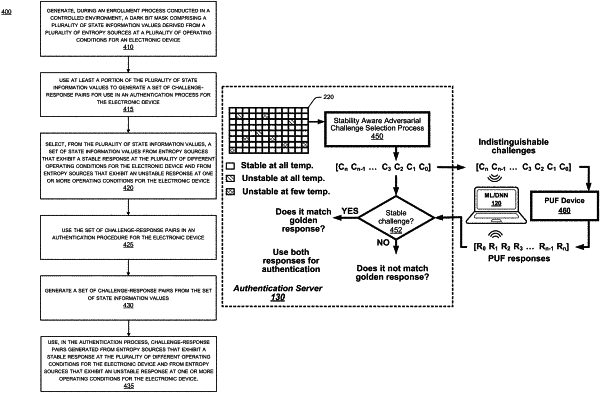| CPC G06F 21/75 (2013.01) [G06F 21/31 (2013.01); G06F 21/79 (2013.01); G06F 2221/2103 (2013.01)] | 18 Claims |

|
1. A method comprising:
using at least a portion of a plurality of state information values derived from a plurality of entropy sources at a plurality of operating conditions for an electronic device to generate a set of challenge-response pairs for use in an authentication process for the electronic device;
selecting, from the plurality of state information values, a set of state information values from one or more entropy sources that exhibit a stable response at the plurality of different operating conditions for the electronic device and from one or more entropy sources that exhibit an unstable response at one or more operating conditions for the electronic device; and
using the set of challenge-response pairs in an authentication procedure for the electronic device;
generating, during an enrollment process conducted in a controlled environment, a dark bit mask comprising a plurality of state information values derived from a plurality of entropy sources at a plurality of operating conditions for an electronic device; and
using at least a portion of the plurality of state information values to generate a set of challenge-response pairs for use in an authentication process for the electronic device.
|